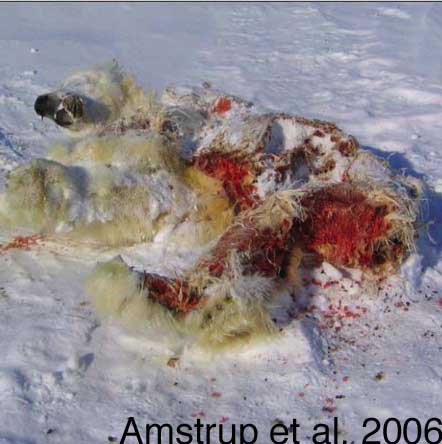Cannibalism
Biology 342 Fall 06
Cannibalism: The Facts
What is Cannibalism?
Cannibalism
is defined as "the killing or consumption of either all or part of an
individual that is of the same species" (Elgar
and Crespi 2).
A
number of factors, both ecological and social, contribute to the
occurrence of cannibalism. Variables such as availability of
alternative food, population density, and competition combine to
produce favorable conditions for cannibalism, even when the potential
costs of such behavior are significant.
Cannibalism has been described across a wide spread of taxonomic groups, in numerous species from cilia to chimpanzees. For some species, cannibalism is a rare event, limited to times of extreme food shortage (as is hypothesized for polar bears, Amstrup 2006), in others it is a normal mechanism of food acquisition (eg. sibling cannibalism in some beetle larvae, Elgar and Crespi 161).
Who eats who?
Contexts for cannibalism
Cannibalism has been observed in a wide variety of contexts. This website will explore four broad categories of cannibalism: sexual cannibalism, oophagy/embryophagy, competitive cannibalism, and juvenile cannibalism. While we cannot possibly discuss all of the species in which these behaviors have been observed, we will highlight a few representative examples, and describe the general mechanism, adaptive value, and phylogenetic relationships for each category.
